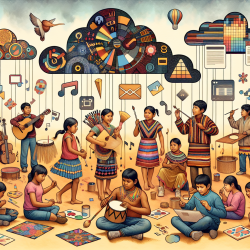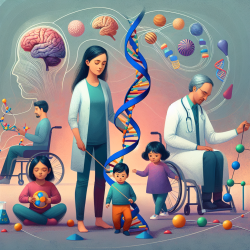Introduction
In the realm of speech-language pathology and therapy, practitioners are continuously seeking innovative methods to improve outcomes for children and youth. A recent study titled "Arts-based HIV and STI prevention intervention with Northern and Indigenous youth in the Northwest Territories: study protocol for a non-randomised cohort pilot study" offers valuable insights into how arts-based interventions can be effectively utilized to address critical health issues among Indigenous youth.
The Study and Its Implications
The study, conducted in the Northwest Territories (NWT) of Canada, focuses on using arts-based interventions to enhance HIV and STI prevention among Northern and Indigenous youth. The intervention, known as Fostering Open eXpression among Youth (FOXY), employs creative methods such as drama, role-playing, and body mapping to engage participants and promote sexual health education.
Key findings from the study indicate that arts-based interventions can significantly improve knowledge of HIV and STIs, as well as enhance self-esteem, resilience, empowerment, and cultural connectedness among participants. These outcomes are crucial for practitioners aiming to address the unique challenges faced by Indigenous youth in remote and underserved communities.
Implementing Arts-Based Interventions in Practice
For practitioners looking to incorporate arts-based interventions into their practice, the study offers several actionable insights:
- Engagement through Creativity: Utilize creative methods such as drama and role-playing to facilitate open discussions about sensitive topics like sexual health and relationships.
- Cultural Relevance: Incorporate cultural elements and traditional teachings to strengthen participants' connection to their heritage and promote a sense of empowerment.
- Longitudinal Evaluation: Conduct follow-up assessments to evaluate the long-term impact of interventions and adjust strategies as needed to ensure sustained benefits.
Encouraging Further Research
While the study provides promising evidence of the efficacy of arts-based interventions, it also highlights the need for further research to explore the long-term effects and scalability of such programs. Practitioners are encouraged to contribute to this growing body of knowledge by conducting their own evaluations and sharing findings with the broader community.
Conclusion
Arts-based interventions offer a powerful tool for practitioners seeking to improve health outcomes for Indigenous youth. By leveraging creativity and cultural relevance, these interventions can foster meaningful engagement and promote positive change. As practitioners, it is essential to remain informed about the latest research and continuously seek innovative approaches to enhance our practice.
To read the original research paper, please follow this link: Arts-based HIV and STI prevention intervention with Northern and Indigenous youth in the Northwest Territories: study protocol for a non-randomised cohort pilot study.










